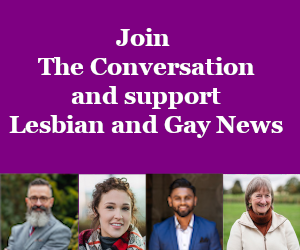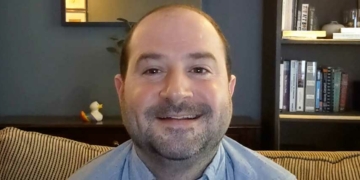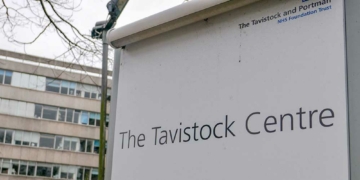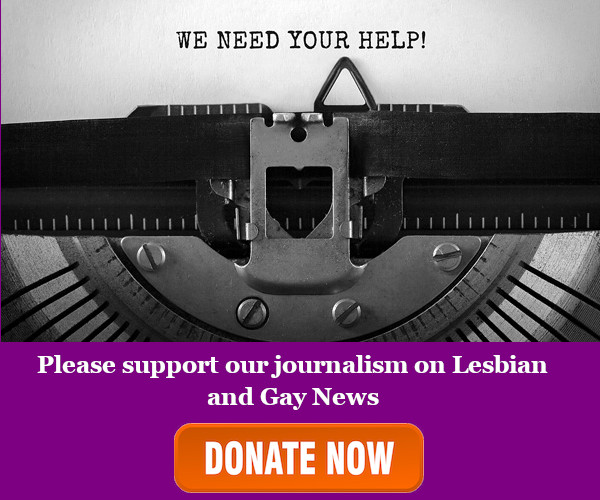The Welsh Government has recently published a proposed ‘Action Plan’ on ‘LGBTQ+’ issues. It is currently open for consultation, with ten specific questions that members of the public can respond to, with a deadline of Friday 22nd October. Sheridan Sinclair has been talking to members of LGB Alliance Cymru, Merched Cymru and Lesbian Labour (as well as other, unaffiliated interested parties) to discuss some of their concerns with the LGBTQ+ Action Plan, and the issues raised.
Sex vs Gender and the lack of clear definitions
The first thing to note is that in the document, the word ‘sex’ is only referenced once, specifically referring to ‘sex characteristics’. The word ‘gender’ is mentioned twenty-three times (not including references to ‘transgender’). Sex is real, and clearly defined in both language and law – all humans are either male (with adults being referred to as men) or female (with adults being referred to as women). The concept of ‘gender’ is much less clearly defined. The document references gender on its own, gender identity and gender expression. Once used as a polite synonym for sex, gender is now a concept that means different things to different people. Within existing UK equality legislation (EA2010), gender is only applicable specifically in relation to ‘gender reassignment’ which is a protected characteristic. An individual with the protected characteristic of gender reassignment will have (or be intending to obtain) a gender recognition certificate under the Gender Recognition Act 2004. This allows them to, in some instances, be considered the opposite sex to which they are biologically, but importantly, single-sex exemptions are still permitted in law. The LGBTQ+ Action Plan does not mention gender reassignment once.
Confusing matters even more, the concept of ‘non-binary’ is referred to ten times. Non-binary is not a concept currently recognised in existing UK legislation, is not a protected characteristic under the EA2010, and no one can obtain a GRC under the GRA2004 to be legally recognised as non-binary. The LGBTQ+ Action Plan itself also does not define what non-binary means, or how to identify people who are non-binary. I personally am a gay man, and I do not conform to patriarchal standards of masculinity, am I non-binary? Many of the women I have spoken to are also happy to share that they do not conform to patriarchal standards of femininity. They are a diverse group of women – of different races, religions and cultural backgrounds – and the majority of them do not fit the supposed ‘social’ role a woman should take in society – are they all non-binary?
This may seem frivolous or facetious, but this is important. We don’t ‘identify’ as non-binary but then we don’t ‘identify’ as anything. We are men or women purely based on the biological reality of our sexed bodies – no more, no less. If concepts such as ‘non-binary’ or ‘gender identity’ are formalised in Wales, with no clear definition, or no gate-keeping, there is great concern over how this will affect women and girls – their privacy, dignity, and safety – and their access to single-sex spaces and services. If any man – an unambiguous male, i.e. not someone with a VSD (Variation of Sexual Development) – is able to declare himself as non-binary, or, a woman, with no gate-keeping, diagnosis of dysphoria, or desire to have any hormone therapy or surgery – will he be able to have unrestricted access to spaces where women and girls may be in state of undress or vulnerable?
Sexuality and Gender Identity are different… and have different needs
There’s an immediate problem with the document as a whole, before getting into the detail. It’s a problem not unique to the plan but rather a symptom of the current wider cultural attitude… and that’s the way it lumps in issues around sexual orientation and issues around gender identity.
Of course, it seems uncontroversial for gender identity to have specific groups, organisations and publications that do not also deal with LGB issues, but the reverse is heresy (as I believe this very publication itself may have discovered). An Action Plan that looks at both issues around sexual orientation and gender identity is a plan therefore looking at two disparate things, and in many cases these two concerns conflict with each other (as indeed J.K. Rowling famously said – if sex isn’t real, then same-sex attraction doesn’t exist). It is unsurprising therefore that one of the two areas will have prominence in the Plan, and of course, the prominence goes to gender. To give an example of this, just by looking at the words used in the Plan – gay, lesbian and bisexual are each used three times apiece, while trans or transgender features 27 times and as noted earlier, non-binary features ten times.
Despite the length of the document there are specific issues that affect gay men, lesbians and bisexual people that are not addressed at all in the LGBTQ+ Plan. One example that is omitted is something rarely talked about: in Wales, bisexual women are more likely to be at risk of domestic violence from a male partner than heterosexual women. This issue will affect more women in Wales and will be more of a serious problem than the issues the tiny minority of people who identify as ‘non-binary’ will face, yet this is not addressed at all.
An example of an issue that affects LGB people different to transgender/non-binary people is that to do with asylum. While the plan does make several references to improving provisions to those seeking asylum, it singles out trans and non-binary people specifically, but never LGB people – although predominantly refers to all under the ‘LGBTQ+’ umbrella. The plan, for instance, states: “Work… to encourage the development of LGBTQ+ asylum properties in Wales”. Gay men and lesbians that would feel uncomfortable with heterosexual people if they have faced persecution for their sexual orientation, would therefore still likely be sharing accommodation with heterosexual people. By far the largest group under the LGBTQ+ umbrella seeking asylum are gay men, and they are also often at the highest risk (there are many countries where transgender identities are less harshly punishable than male homosexual acts, in fact there are indeed countries where the former is accepted while the latter is a criminal activity). It is incredibly difficult to prove whether gay men seeking asylum are gay, and this can lead them to being returned to their home countries, where they can face extreme persecution, including execution. This is a key area that should be looked at, and yet is lumped in with a generic ‘improve LGBTQ+ asylum experience’.
Rights? What rights?
Next, I will look at what rights the Action Plan seeks to give ‘LGBTQ+’ people that they do not already have. The document refers to ‘rights’ 37 times, and these are how the rights are specified:
Equal Marriage and Adoption Rights. This is referred to as rights already won and in place, so the Plan is not looking at how to enhance these.
Rights afforded by existing conventions and treaties, although it does not detail what they are.
The rights and dignity of trans and non-binary people.
Upholding the rights of trans people working in the private sector.
All other examples use the term ‘LGBTQ+’ rights or human rights. There is no specific mention of rights for lesbian, gay or bisexual people.
For an Action Plan seeking to enhance the human rights of a diverse group of people, it is astounding as to how vague it is. The only specific rights it details are rights already won, and employment rights of trans people (but again, without being specific). If the Action Plan is to improve the rights of ‘LGBGTQ+’ people in Wales, it should be specifying what rights are still not had, how they will be attained, and, crucially, how they are applicable to each of the diverse groups represented by the ‘LGBTQ+’ umbrella.
Assessing the Impact, and obtaining a diverse range of opinions
Initially, it was unclear if an Equalities Impact Assessment (EIA) on the LGBTQ+ Action Plan was carried out. EIAs should be readily and publicly available for all members of the public to access, should they wish, but initially it was not published anywhere. It took the submission of an FOI (Freedom of Information request) before it was published.
Looking into the EIA, it is striking how poor it is and it is surprising it was ever deemed as acceptable. It should be looking at the impact of the Action Plan on the Welsh community as a whole, and of the diverse people within. It is in itself not representative of the EIAs usually carried out by the Welsh Government, and it is disappointing they are not following their own best practice. The EIA only refers to one stakeholder discussion within Wales, the rest of its evidence given are citations to work carried out by other organisations, outside of Wales. The Welsh public should have been engaged in an open and honest way. The lack of appetite for open engagement followed by the initial reluctance to publish the EIA is itself a cause for concern.
The Welsh Government cannot claim its lack of engagement was due to lack of interest. Both LGB Alliance Cymru and Merched Cymru offered to engage with and consult on the LGBTQ+ Action Plan multiple times, but they were consistently refused. It seems the Welsh Government flat out does not want to talk to the people who are most affected by the Plan. It should also be noted that there are other minority interest groups – including religious and cultural groups – that this Action Plan could have a profound effects on, and yet they too have been ignored. While one of the consultation questions specifically relates to how the Action Plan intersects with other groups with protected characteristics, the consultation also has a warning that it will not accept comments deemed as ‘hate speech’ and that such comments are unlawful. The issue is what is seen as hate speech? Representatives of the Welsh Government on social media have made allusions to the fact that referring to a transgender identified individual’s biological sex is ‘hate speech’ (and the original wording on the consultation page, now amended, was particularly aggressive). If this is the case then how can anyone talk about how the LGBTQ+ Action Plan intersects with the protected characteristic of sex?
It is clear that in producing the Plan, and in carrying out the EIA, the Welsh Government has listened to a far too narrow spectrum of views, and relied on the input from Stonewall Cymru – a political lobbying group who many LGB people feel do not represent them.
Conclusion
Overall, it is clear that this LGBTQ+ Action Plan is not fit for purpose. If the Welsh Government truly wants to improve the experience of LGB people, and trans (including non-binary) people in Wales, I believe the best option would be to ditch this LGBTQ+ Action Plan and start again. The best course of practice would be to have two separate Action Plans – one for LGB people, and one for trans/non-binary people. That way, they can look seriously at the issues that still affect those of us on the basis of our sexual attraction, while also looking at the growing number of people who claim a gender identity. They should conduct robust EIAs openly and honestly, and seriously look at how gender and sex are different, and how actions relating to legalising and codifying the concepts of gender identity and non-binary affect other protected characteristics, such as sex and sexual orientation.
As it stands, this LGBTQ+ Action Plan is shameful and worrying, a manifesto that reads as though it was produced wholesale by Stonewall themselves. If you are a resident of Wales, please do provide feedback on the consultation by Friday 22nd October.
How to respond to the Welsh Government’s LGBTQ+ Action Plan
Submit your comments by Friday 22nd October, in any of the following ways:
Complete the Welsh Government’s online form
Download, complete their response form and email LGBTQ+ActionPlan@gov.wales
Download, complete their response form and post to:
The Equality Team
Welsh Government
Cathays Park
Cardiff
CF10 3NQ
























Comments
No comments yet, be the first to leave a comment.